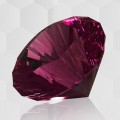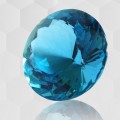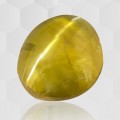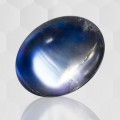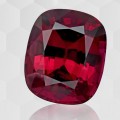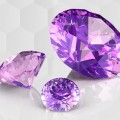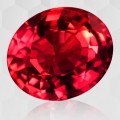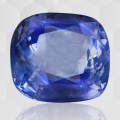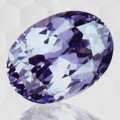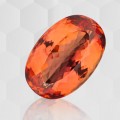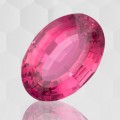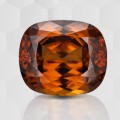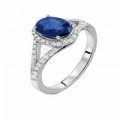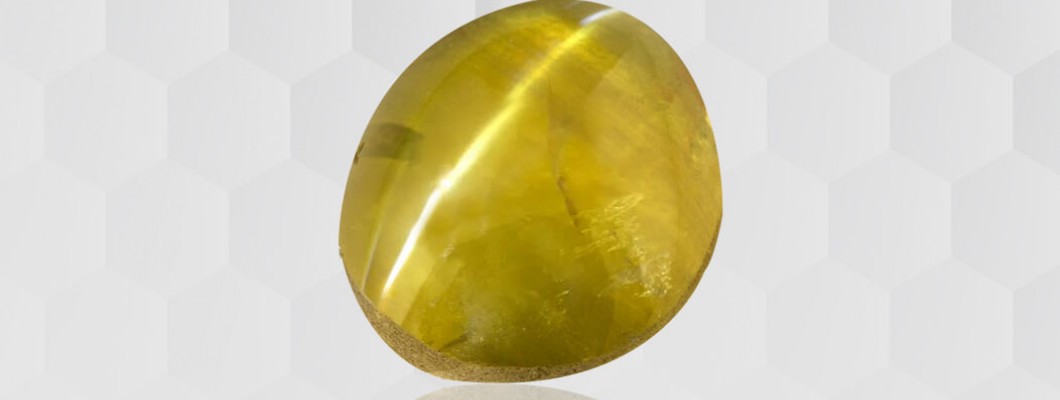
A variety of chrysoberyl with acicular mineral inclusions oriented in relation to the vertical axis of the chrysoberyl crystal structure capable of producing chatoyancy is identified as cymophane. In its structure these innumerable microscopic needle like inclusions create a silky reflection effect. The solid mineral inclusions some times may not be present but the hollows or tubes that once contained these could produce the same effect. These generally are positioned in a direction along the vertical axis of the crystal, or in the alternative it could be a multitude of relatively short needles of mineral inclusions arranged in a manner vertical to the c-axis (W.F. Eppler - as recorded by Webster 1983). These inclusions make stones cloudy, reduce transparency and produce reflection effects. These if properly oriented would, when cut 'en cabochon' display chatoyancy, or the cat's eye effect. What is produced is a silvery streak of light which is displayed across the cabochon surface. This has a striking resemblance to the pupil of a cat's eye. Chatoyancy, like asterism is a reflection effect brought about by the stone's inclusions and its effect is determined by the nature of the stone. This effect could be either enhanced or diminished by the lapidary by varying the curvature of the cabochon and the spread of the cabochon surface. After a research study of chatoyancy in chrysoberyl cat's eyes from Trivandrum district, Soman and Nair (1985) have suggested that the chatoyancy in these could be caused by acicular crystals of sillimanite which are an essential component of the khondalite rocks of the area. This could also be the cause of chatoyancy, at least in some of the Sri Lankan chrysoberyl, as khondalite rocks are the source rocks of most of the gemstones of this country.
The silvery streak of light could be very sharp or diffused. Generally this streak of light will be well defined in smaller stones in the sense that their boundaries could be sharp and distinct. In the larger stones this effect has a tendency to be blurred and indistinct sometimes gradually merging into the body colour of the stone. This does not in any way mean that the bigger stones are inferior or not as effective. This is a very generalized statement as extremely attractive large sized stones are a special feature of the Sri Lankan types. Characteristically cat's eyes are cloudy and translucent, which factors, heighten the effect of chatoyancy. In clear and transparent stones the effect is considerably reduced.
The value of cat's eye will depend on the effectiveness of the ray, the size of the stone and the colour. Some common colours in which cat's eyes occur are milkywhite to grey, bluish or greenish-white, apple-green, greenish-yellow, honey-yellow, brownish-yellow and brown grading into black. Black is extremely beautiful when coupled with a sharp silvery ray across it. Honey coloured stones are much in favour but this could change with fashion trends. Certain stones show bi-colour effects or shades appearing on either side of the ray, and sometimes the ray seems split when observed from a certain distance from the light source but, would join up at an optimum distance. Mullenmeister (1980) has recorded the discovery of a white chrysoberyl variety from Sri Lanka. It is of interest to note that the National Gem & Jewellery Authority is the proud owner of a beautiful eat's eye of 103 carats. Sri Lanka therefore is undoubtedly the locality for large sized eat's eyes with superb rays and body colours.
Six rayed star chrysoberyls are also met with but rarely, the cause of which is once again inclusions. The stones have to be cut 'en-cabochon' to display the effect.

